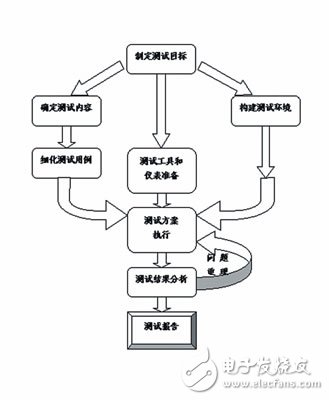In order to provide users with reliable communication assurance, the wireless network of mobile communication must meet the appropriate performance indicators. Coverage, capacity, and handover performance are all key indicators (KPIs) for measuring the performance of wireless networks in mobile communication systems.
For TD-SCDMA systems, the performance of the network needs to be fully and thoroughly verified in a real wireless environment. At the same time, because TD-SCDMA adopts key technologies such as smart antenna, joint detection, uplink synchronization, relay switching, and dynamic channel allocation, Traditional network planning and analysis methods have certain impacts. It is also necessary to test the comprehensive effects of various technologies and accumulate certain experience for actual network construction.
Coverage and capacity test of TD-SCDMA wireless network
The wireless network key performance indicator (KPI) test is a direct verification of the operation and quality of the wireless network. It needs to objectively examine and evaluate the parameters of the wireless network signals in specific areas (such as urban areas, highways, etc.) and test The problems found in the process, such as dropped calls, weak coverage, interference, etc., are analyzed and the corresponding solutions are obtained. Coverage and capacity testing are the main content.
KPI testing should follow the principles of objective science, from setting test objectives, determining test content, refining test cases, building test environments, preparing test tools and instruments, executing test plans, analyzing test results, relocating problems, and completing test reports. Multiple links are completed together. The overall process is shown in Figure 1.

Wireless network key performance indicator test process
Test target
The goal of the coverage test is to determine the coverage of various services in the tested cell, to determine whether its network coverage is limited by uplink or downlink. After testing, the TD-SCDMA system is obtained under different smart antenna conditions. The propagation environment conditions and network coverage performance and related actual data under the same frequency and different frequency networking conditions provide a certain guiding role for the network construction of TD-SCDMA communication system.
The goal of the capacity test is to obtain the maximum number of users of the TD-SCDMA cell under the same frequency and different frequency networking conditions, analyze the limited reasons of the system capacity of TD-SCDMA under different conditions, and analyze the configuration and terminal of the base station. The performance and various factors such as the business model affect the system capacity, and the network design and planning scheme of the system is obtained, which provides reference for network construction and operation maintainers.
2. Test the network environment
The smallest scale used to test the network is a layer of cellular network structure. That is, there are 7 cells to form a cellular coverage, and the central site is selected as the main measurement cell; the test station type can be divided into an omnidirectional station and a directional station; the test environment can be selected from a plurality of environments such as a dense urban area, a general urban area, a suburban area, and a remote suburb.
3. Test systems and tools
The network system under test should be in a normal working state, which can meet the normal operation of multiple services (voice, videophone, and packet service). In addition to real-time data acquisition, RNC and base station should also have the analog loading function of OCNS (OrthogonalChannelNoiseSource) to complete the construction of certain test conditions.
Test tools include drive test systems and network side test instruments. The road test system includes a complete set of systems including data acquisition front-end, global positioning GPS, notebook computers and dedicated test software. The test instruments on the network side are mainly composed of protocol analyzers of each interface, and combined with the system operation and maintenance platform, obtain important information on the system side. Through joint analysis with the record of the road tester, we can get complete information on the wireless network during the test, so that the test results can be accurately obtained, and the problem can be more easily located.
| About Bare Aluminium Wire |
Packaging Detailspackage can be made according to customers' requirements.
Bare aluminium
wire with high electrical resistivity, temperature coefficient of resistance is small, high operating temperature. good corrosion resistan
ce under high temperature, and particularly suitable for use in a gas containing sulfur and sulfides, low price, it is widely used in indus
trial electric furnace, household appliances, far infrared device ideal heating material.

Good performance and processing may welding nature widely used metallurgical, electrical, mechanical components and electrical
Bare Aluminium Wire
Bare Aluminum Wire,Wire Bare Chromium Aluminum,Bare Chromium Aluminum Wire,Chromium Aluminum Wire
HENAN HUAYANG ELECTRICAL TECHNOLOGY GROUP CO.,LTD , https://www.huaonwire.com